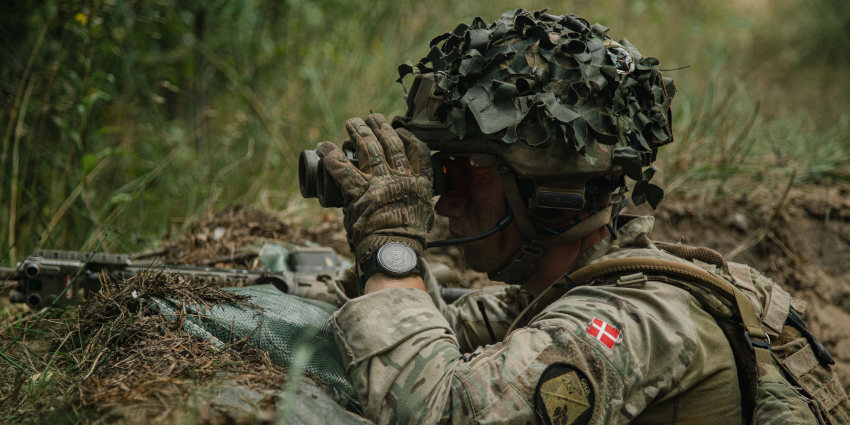The North Atlantic Treaty Organisation’s (NATO) Allied Command Transformation has inked a deal with Latvia to host member-states for a novel 5G test bed for military-grade emerging technologies, including extended reality (XR).
In an announcement this week, the Latvian Ministry of Defence stated it had signed a Memorandum of Understanding (MoU) with NATO’s Allied Command.
With the initiative, it would use Latvia as a testing ground for military defence technologies. Both entities will experiment with the new immersive defence platform at the Ādaži military base in October.
The battery of tests will determine how the military alliance will procure, develop, and roll out its technological initiative using 5G.
NATO’s latest military test bed will also launch Europe’s first-ever emerging tech platform for the defence alliance following its successful founding in 2020.
XR Today understands that the initiative will also allow Latvia to reach its cybersecurity and tech requirements as outlined in its Cybersecurity Strategy 2023 – 2026.
Readying XR for Launch
The launch follows a five-day trial in Latvia in November last year between the Latvian Ministry of Defence and the Enhanced Forward Presence Battlegroup in the Latvian Armed Forces.
Military personnel leveraged virtual, augmented, and mixed reality (VR/AR/MR) technologies, 5G mobile networks, and other tools in the exercise.
These were used to pilot remote military vehicles and offer remote guidance to soldiers and staff.
Furthermore, NATO plans to transform digitally by 2030, providing the military bloc with multi-domain missions and greater interoperability across its operations.
Additionally, the organisation aims to boost its situational awareness and decide on strategic measures using data-driven consultations.
The military aims to benefit from using 5G to develop its ‘military metaverse’ of emerging technologies, with the testbed networks reducing latency, boosting wireless connectivity, and increasing collaboration for staff.
China Leads in 5G Preparedness
According to the report, China has “outpaced the [US] in the wireless 5G network market,” leading Western military officials to begin investing in its networking capabilities.
According to an ACT press release, the event would “see the use of virtual and augmented reality, unmanned vehicles, sensors, and applications within a tactical 5G bubble.”
It continued: “ACT will demonstrate how 5G’s ability to provide ultra-reliable and low-latency connections can bring additive capabilities to NATO communication and information systems.”
Gen Laura Richardson, Commander, US Southern Command, said at a recent event in Washington,
“While the U.S. needs to invest in military modernization to deter China, it also needs to become a big player in the 5G wireless network industry […] Information sharing between military allies utilizing a 5G network is absolutely crucial, but what is even more crucial is relying on a network that is completely secure”
CEPA Comments on Camp David Pact
The developments come amid the massive Camp David Summit, where Joe Biden, President, United States, met his South Korean and Japanese counterparts, President Yoon Suk Yeol and Prime Minister Fumio Kishida, respectively, to boost military ties to counter China.
The Summit aimed to restrict China’s access to advanced computing technologies, citing possible military uses and leveraging its economic capabilities.
To date, China is the largest trading partner with South Korea and Japan, the Centre for European Policy Analysis (CEPA) noted in its article.
Furthermore, South Korea has climbed to earn 60 percent of the global market share in memory chip production, used for the world’s most advanced technologies, including XR hardware.
US Secretary of Defense Lloyd J Austin III said in a statement,
“Today’s summit reaffirmed that cooperation among our three countries delivers security and prosperity for our people, the Indo-Pacific region and the world,” he said. “We are working more closely than ever with the ROK and Japan in support of a common vision for a free and open Indo-Pacific region”
President Yoon added that [the alliance should] “evolve into a supply chain and future-oriented, innovative-technology alliance.”
This would lead to the construction of a “silicon shield” to support the US presence in the Southern Pacific, he said.
CESI Prepares Military for 5G, XR Testbeds
The events come two years after the US National Spectrum Consortium and Cole Engineering Services (CESI) kicked off a $31.3 million USD initiative to boost the US Army’s 5G networks.
Using virtual and augmented reality, the joint venture saw a group of contractors develop testbed 5G networks at the Joint Base Lewis-McChord (JBLM) in Washington, USA, in June 2021.
The new network will support military-ready XR solutions for mission planning, instruction, and remote guidance. CESI began working on the project in three phases, demonstrating its potential for building XR technologies for staff, military fighters, and government officials.
Numerous US allies have also begun commissioning XR for their workflows and defence strategies. This week, the Royal Australian Armed Forces (RAAF) began testing a Boeing







